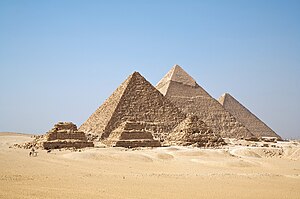Short answer: Yes!
The foundation of Montessori is respecting the child where he is right now and the direction he is going.
And that is the beauty of Montessori as well.
But adjustments will need to be made.
At any age, start with the How to Get Started in Montessori Homeschooling.
Primary (2-6):
- 4 year olds: can generally start at the beginning of each primary album, but will move through some things faster; if the child is in a school, encourage lots of language games at home in particular
- 5 year olds or close to 5: again, they can start at the beginning, but make sure it is truly a game; they like to be a bit silly (that sense of humor is kicking in), so meet them in that place; for example, they won't want to trace sandpaper letters as much but are starting to use reason, so explain, "This will help with writing". You will likely move quickly through some things, but make sure to have thorough understanding - and I can't say enough: make it a game! They love those language and environment games ending each of the sensorial album pages - the sillier the better! (examples: scattering items and needing JUST the longer rod; or having them match all the geometric shapes to ALL the cards, but you have a set hidden underneath you and you just giggle as they get to the point of frustration (a hint that there is something up)). And do move at THEIR pace - which may be quicker than a 3 or 4 year old. Or slower in some areas - it is all fine!
- Some areas this older-primary child just needs the experience - no need to have perfect mastery before moving on with new presentations. You'll know when it's time to slow down on presentations.
Elementary (6-12):
- All elementary children, but especially those without primary experience: get them working with their hands, even when they've moved out of the fussy-hands-on stage - handwork such as weaving, pottery, crochet, knit, cross-stitch, sewing, wood-working, mechanical work - whatever and as much as possible give them these skills NOW. They will need them to express themselves properly in the adolescent years.
- 6 year olds with no primary experience, or the albums didn't quite line up: there are remedial/bridge sections for language and mathematics - utilize only as needed. Think of remediation as a "bridge" - it is just an adjustment into a new plane of development. Keep them integrated into ALL other presentations (Great Lessons, Key Lessons), they do not NEED to read/write/do-math in order to have their needs fulfilled by the Great Lessons. You'll want to keep the most practical and preliminary of practical life available in the beginning (pouring dry and wet, for example) for children who have not had this practice at home.
- 7-9 year olds: also utilize those remedial album pages ONLY as needed. Just verify the child has those skills and move on. These children love "challenges" with the primary level materials - it has to be a game, a challenge; while use of the primary materials by these children is not required, it is amazing how much they get into the challenges and fine-tune their skills.
- 9-12 year olds: They likely do NOT need the remediation, though some situations justify it. Again, start where they are at with the elementary albums - have them show you what they know. They still need the Great Lessons whether or not they are continuing from a younger Montessori experience, so start there and proceed through the album pages at their pace. Review what they already know and go on to the next activity. Get them working independently on research projects. They prefer to be less "fussy" about beads and small parts, but should be strong on their handwork skills.
Adolescence (12-15):
- Their minds are slowing down in pace of development as their bodies are going through so many changes, including physical and hormonal. They crave to find their place in the grand scheme of things and need to be connected with nature.
- Encourage lots of handwork.
- No elementary experience at all? Introduce the Great Lessons and Key lessons - the best way is if they can be helping make materials and work on presentations with actual elementary children. But if this is not possible, just get them involved as much as possible.
- Definitely cover the upper elementary presentations, especially on economic geography, history, geography. Mathematics and geometry in whichever areas needed (do not drill and kill). ETA: Many of these experiences are outlined in the Keys of the Universe Cosmic Education album, available in several places.
- There is also now an adolescent algebra album that they can move into when ready (it covers FAR more than just algebra!!!). See Montessori Albums page (scroll down to the adolescent section) for the links.
- Get them outside as much as possible - camping, hiking, working with animals, gardening, farming if possible, planning and building structures (ie for a farm or small business).
- Encourage entrepreneurship - think consumer mathematics here. Business math programs designed for this age - economics.
- For mathematics, focus on mathematics as part of life: in history, art, geometric designs; utilizing those math skills for practical purposes such as managing a household or a small business.
- Essentially, they should be LIVING cosmic education.
Adolescence (14-18):
- Their minds are picking back up in pace and their bodies are slowing down in changes.
- Incorporate all suggestions from the 12-15 range.
- Can handle theoretical lectures, but still need real work.
- Essentially, they should be LIVING cosmic education, now adding a deeper intellectual component.



